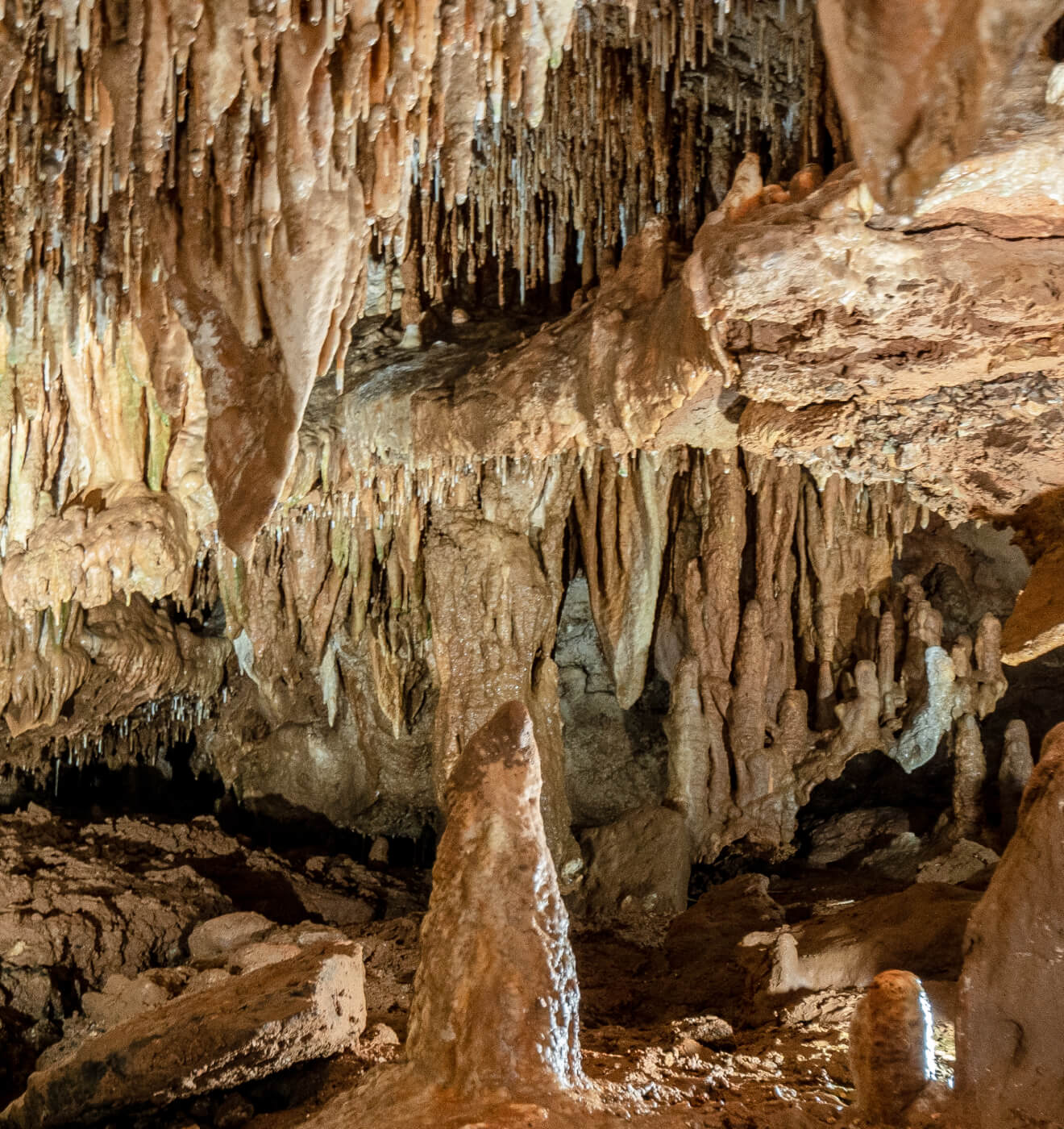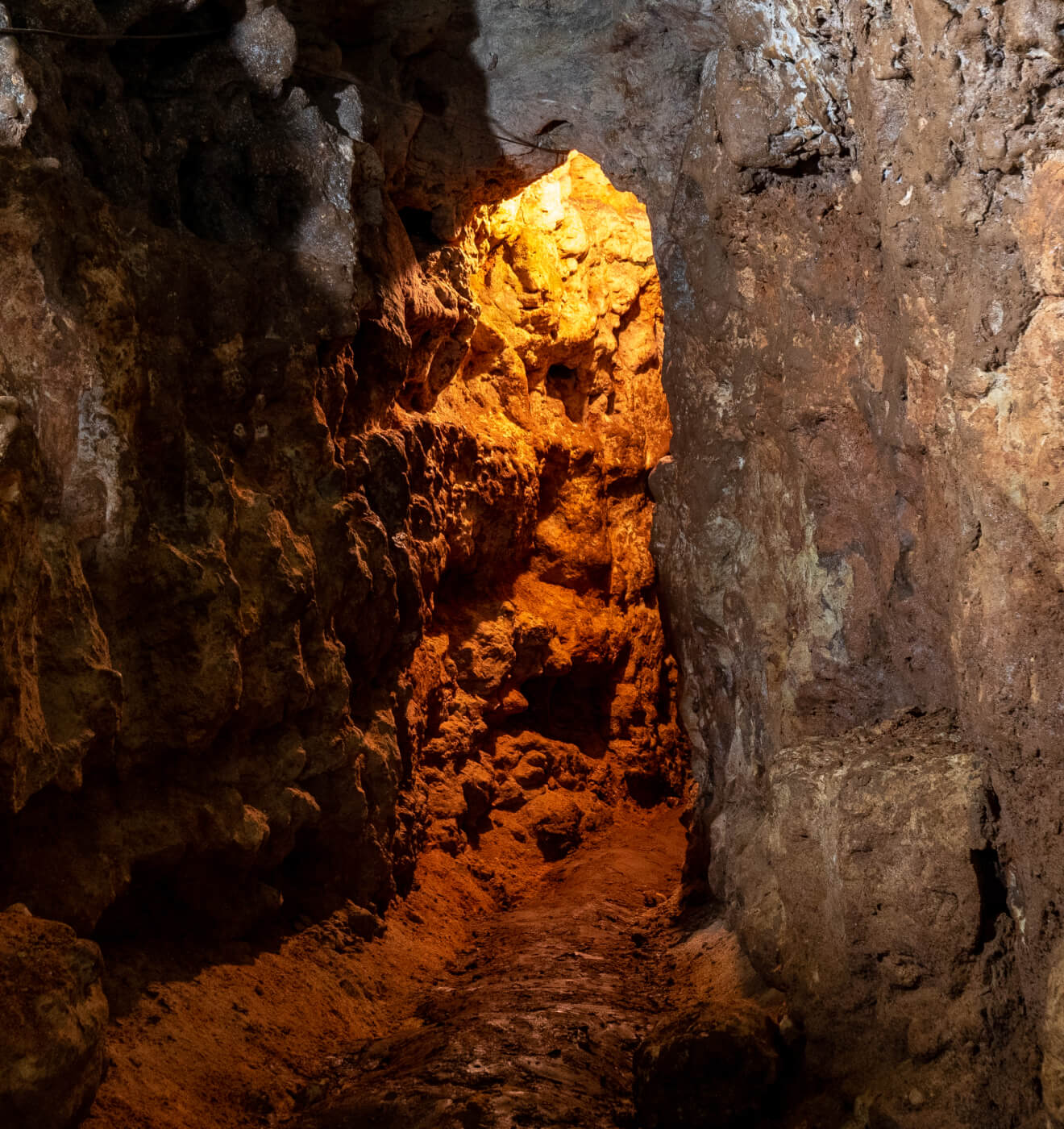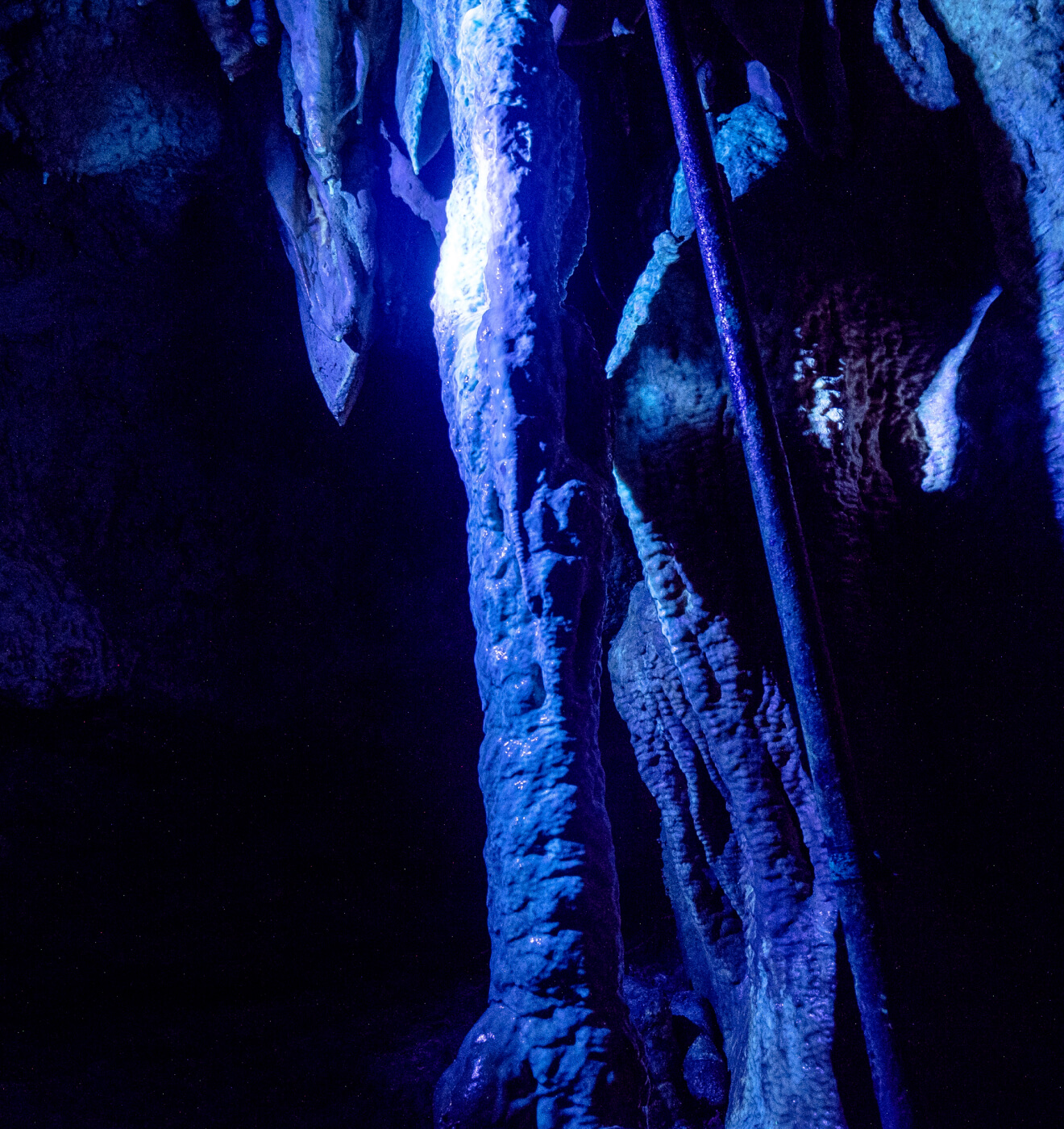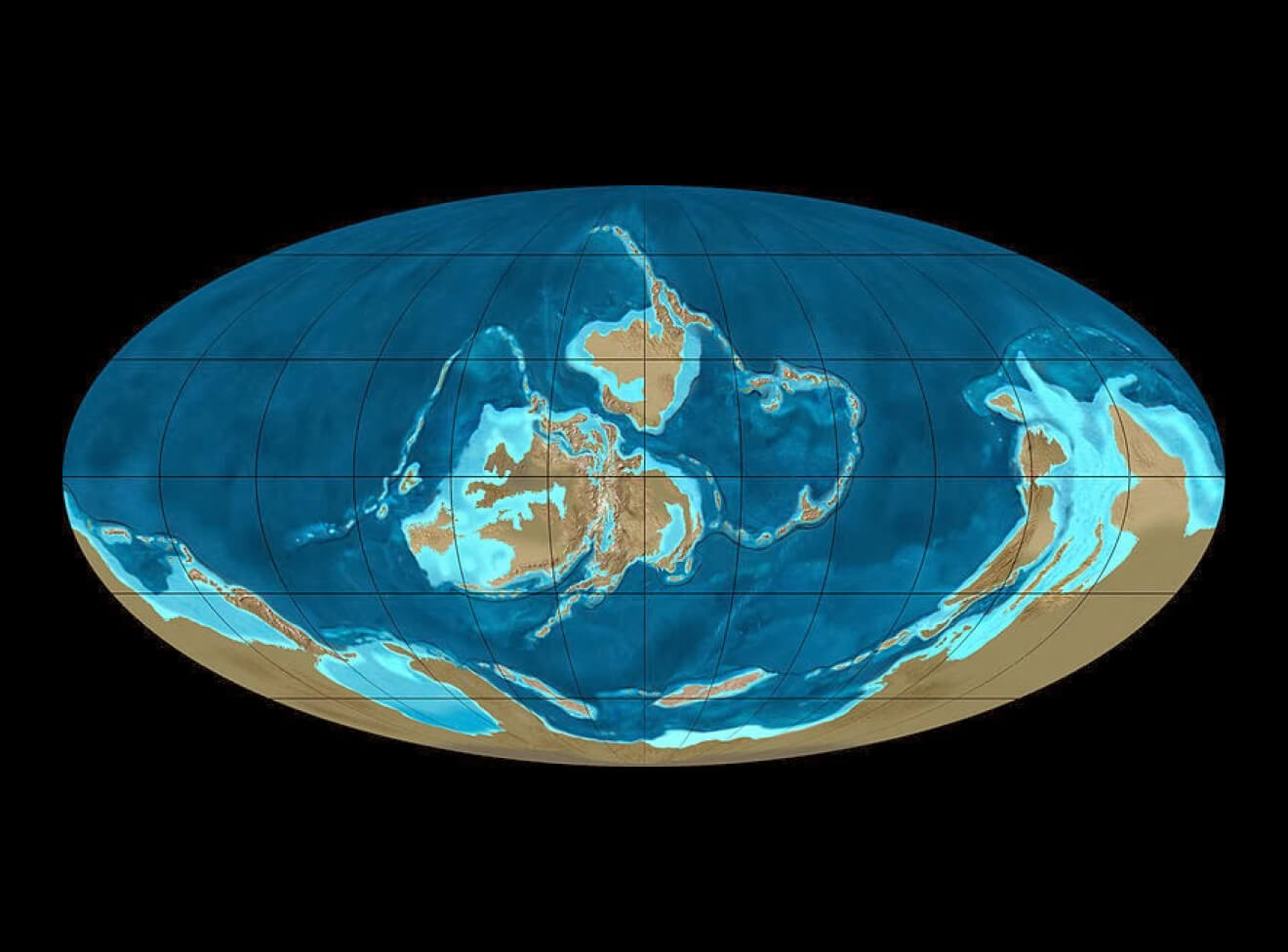Colonel Wallace Talbott found a Spanish map in the Archives of the library in Jefferson City, Missouri that shows a large cave marked north of Gravois Mills. It may have been Jacob’s Cave the Spanish mapped and it may not, but there are no other large caves known in the area. If indeed Jacob’s Cave was the cave on the Spanish map, the entrance had become closed before the area became settled.
According to The Goodspeed Publishing Company’s 1889 History of Cole, Monheau, Morgan, Benton, Miller, Marks and Osage Counties, Jacob’s Cave was discovered in 1875 by a lead and tiff miner, named Jacob Craycraft.








